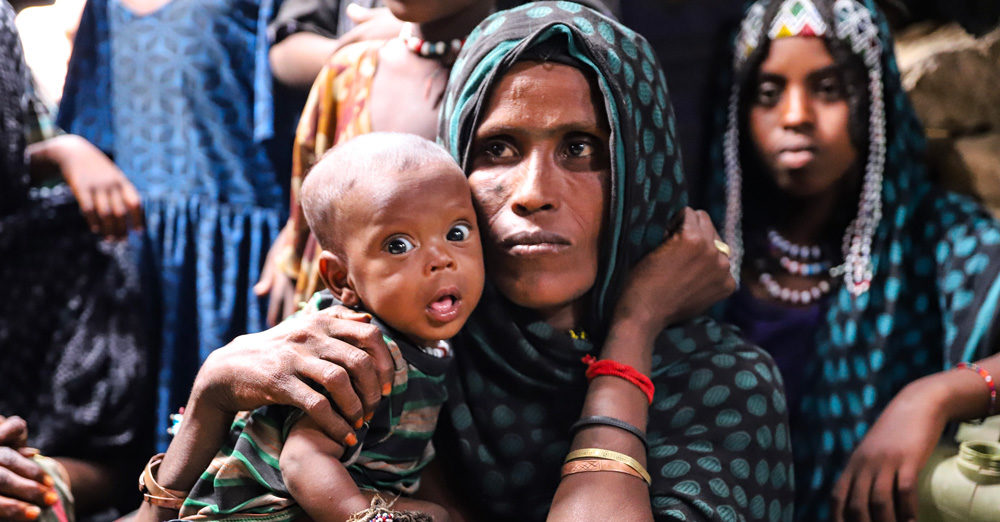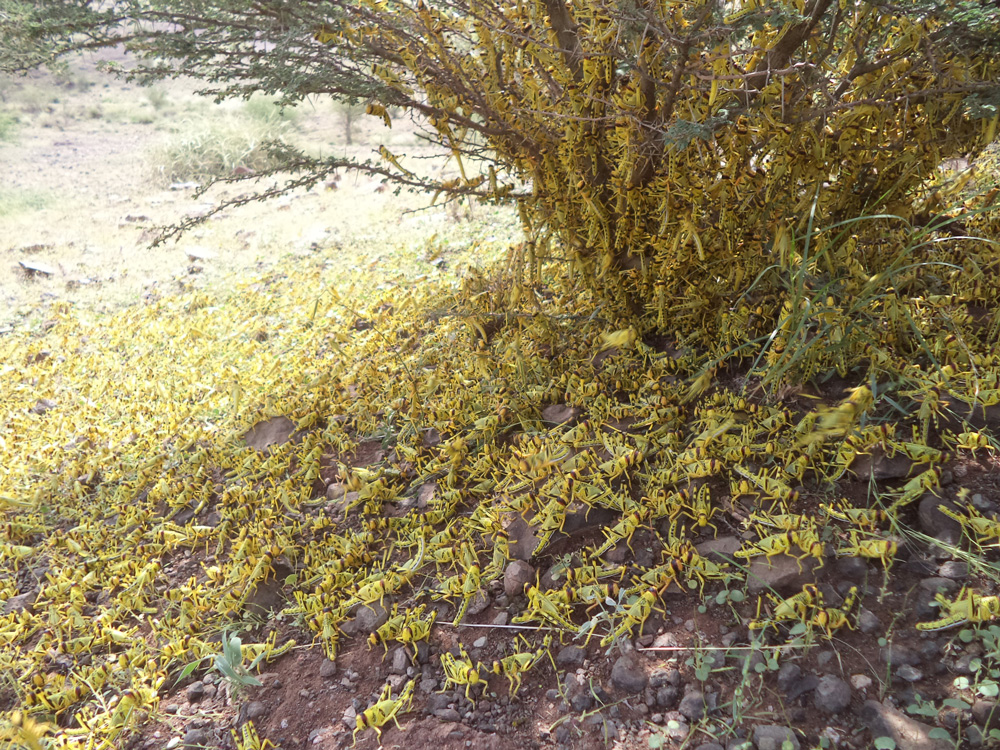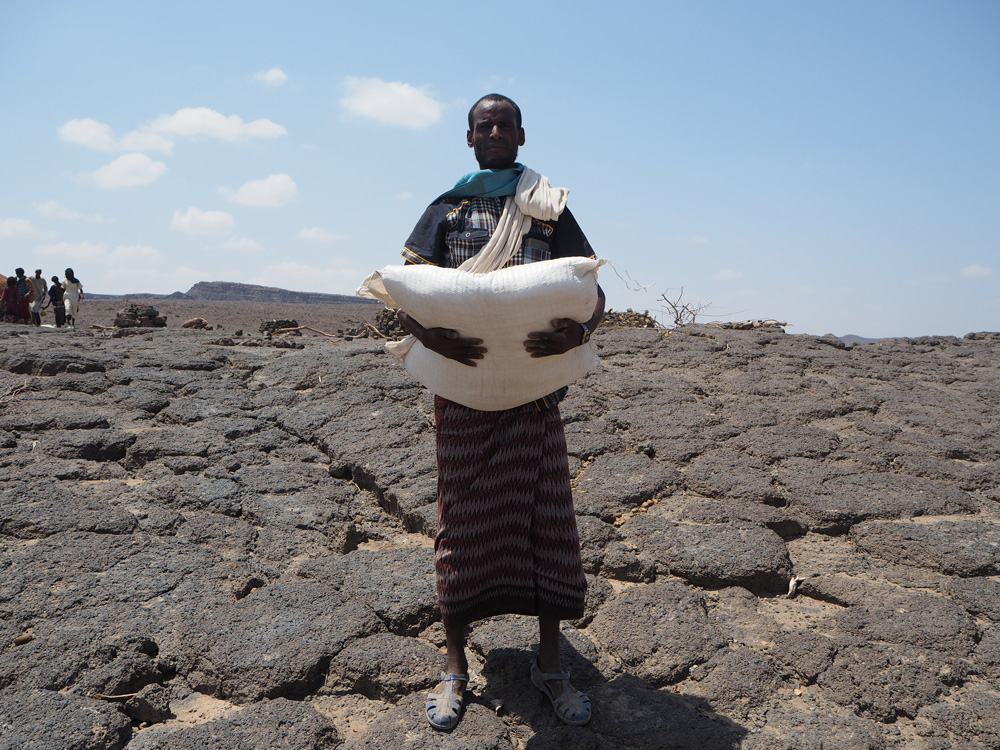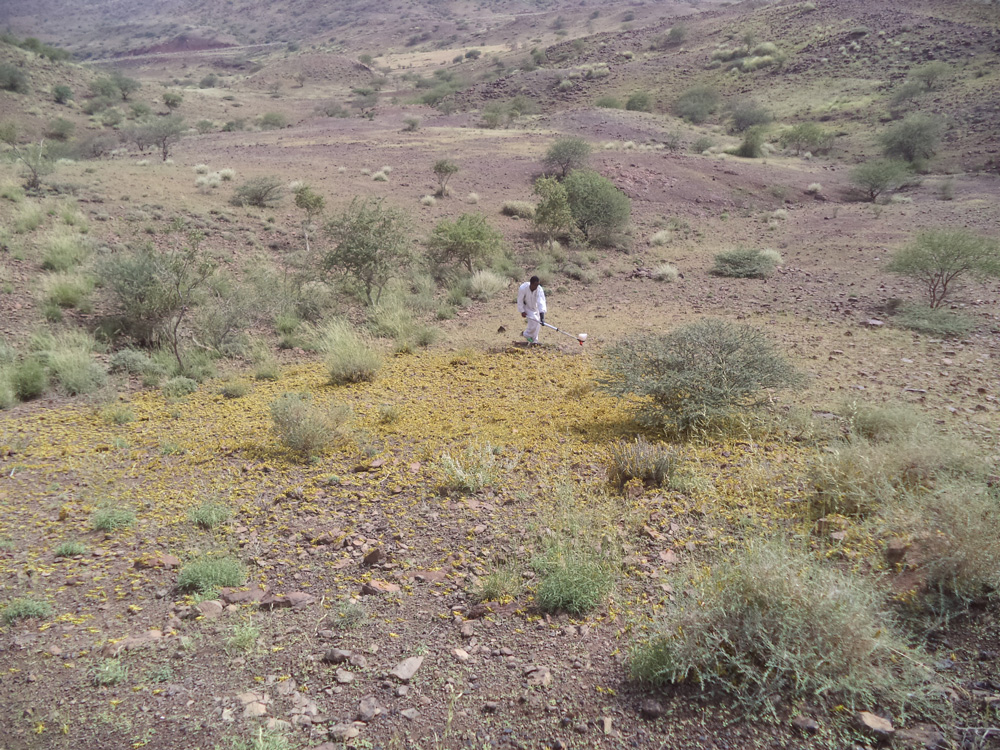“Honestly, there is no place to get soap,” Gobalee Hasna speaks with a health worker about COVID-19 while she is waiting for emergency food assistance from the Afar Pastoralist Development Association (APDA). Gobalee is weak and malnourished, all her 28 goats died because consecutive grueling droughts and the locust invasion depleted the pastures. Like the majority of Afar semi-nomadic pastoralists in the drylands of north-eastern Ethiopia, she depends on livestock for food security.
Gobalee hopes that the rains will come soon so that the herds in her community can recover. Then the people from her clan will help by giving her a milking goat and she will rebuild her small herd again. This is a traditional coping mechanism, but even that is starting to fail now.

The reasons behind acute food insecurity in Afar are many and interlinked. While the world is focused on the ongoing COVID-19 pandemic, other humanitarian emergencies don’t go away, even though they aren’t discussed as much by the media. Droughts and the locust invasion have been plaguing Ethiopia and other countries in East Africa before the pandemic and the current movement restrictions are hampering the response to these emergencies.
Locust infestation has hit the already vulnerable and drought-affected communities in Ethiopia hard. FAO estimates that one million people now are in acute need of emergency food. This comes on top of the 8,5 million people who were already severely food insecure in Ethiopia because of adverse climatic conditions and poverty. The second wave of locusts is likely to exacerbate these statistics even further since it will affect the main cropping season.
Huge numbers are difficult to grasp, but behind each figure, there are people like Gobalee, who fight every day to sustain their livelihoods and lives of their families. When the locusts stripped the grazing land of vegetation and COVID-19 restricted movement of goods and services, the Afar people were already in a very vulnerable state.
While the Afar people and other affected communities urgently need support to beat locusts, hunger and the coronavirus, development and policy measures must look beyond the emergency and help these communities restore their land, become resilient and thrive, despite shocks.
Malnutrition – the silent killer
Valerie Browning, a nurse originally from Australia has been living with the Afar community for more than 30 years. In 1989, with her Afar husband, Ismael Ali Gardo, she set up the Afar Pastoral Development Association (APDA). The non-profit formed in cooperation with the local communities to improve the health, education and livelihoods of the Afar community. During the current crisis, APDA works hard to ensure the Afar people have enough food and water to cope. But it’s an uphill battle that doesn’t receive the attention and support it deserves: ”The situation has steeply deteriorated. Malnutrition, the silent killer, has a fierce grip on many remote communities,” Valerie writes in an email to SIANI.
Her reports correspond with the information from the FAO, according to which the Afar region recorded the highest increase in the rate of poor food consumption in Ethiopia, which rose from 58% in August 2019 to 91% in February this year.
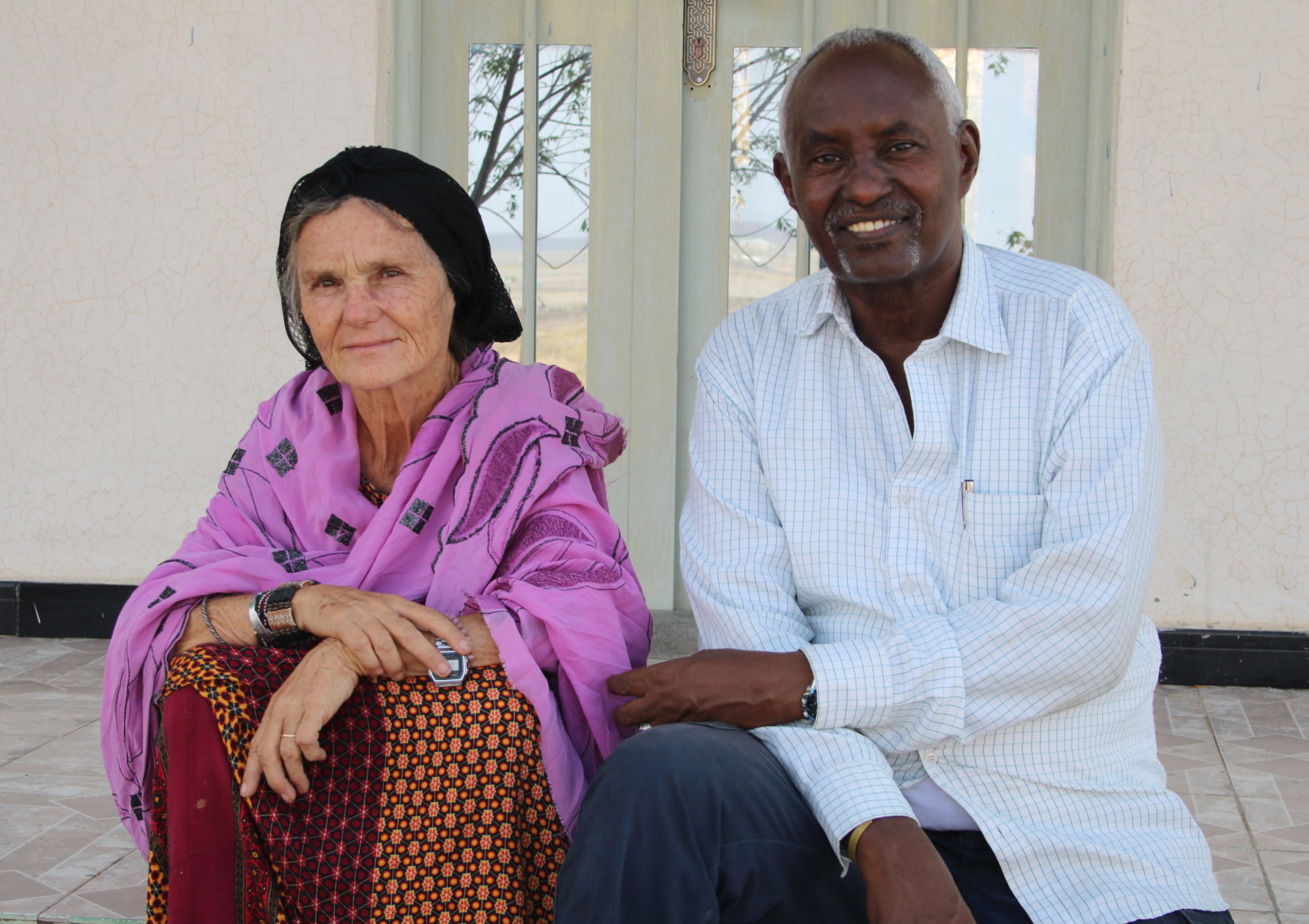
The APDA health team recently returned back from the remote Teeru and Awra communities in Afar and reported a severe lack of food and water for households and their herds. The animals are very thin and in bad health, so humans can’t get enough food either. Infants, elderly and pregnant or lactating women are particularly vulnerable. In fact, according to the APDA’ health screening, 44% of pregnant and lactating mothers are malnourished.
Another particularly alarming figure from the screening is the level of malnourishment among children: 15,2% of children under five years old have moderated malnutrition and 6,4% suffer from severe acute malnutrition (SAM). “This SAM figure is extreme and means children are dying daily from malnutrition,” Valerie explains. People with malnutrition lose immunity and become susceptible to other diseases.
